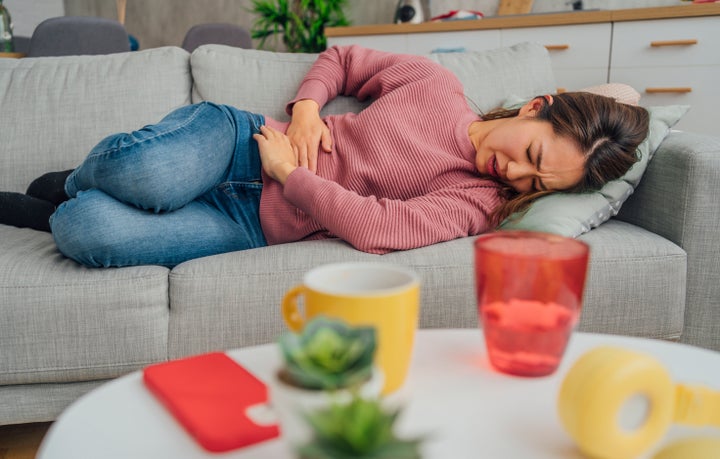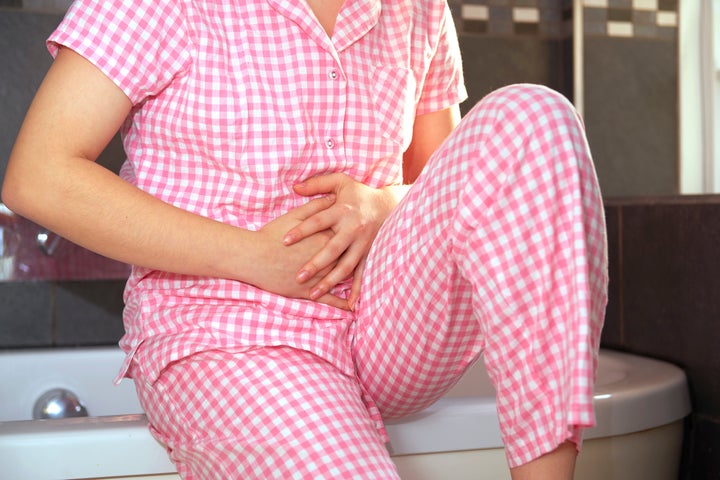
Awareness around endometriosis has soared recently, but there’s still a lot of that seems confusing around the condition.
For instance, what happens if you don’t get it treated? And what connection does it have with fertility?
The term describes how tissues similar to the lining of the womb grow in other places outside of the uterus, triggering abdominal or pelvis pain, period pain, pain during sex, pain when going to the toilet, nausea, constipation, diarrhoea and fertility issues.
As the NHS explains, the long-term condition can affect women of any age. There’s still much more we need to find out about it too.
The exact cause behind it is still unknown and it’s exceptionally difficult to get a diagnosis for endometriosis in the first place, because the symptoms vary so much – and mimic many other conditions.
To make matters worse, women usually receive a diagnosis a whopping eight years after symptoms begin.
But, there are a few ways you can learn more about the condition.
Francis Gardner, consultant gynaecologist and cancer surgeon at Spire Portsmouth Hospital has lifted the lid on some of the most Googled questions around the condition.
What sex positions are advised if you have endometriosis?
Pain during or after sex can be a symptom, as explained by the NHS, but the tissue which causes this discomfort can grow in different places (vary in severity).
That means the best positions vary for individuals too.
Gardner explained: “If a woman sits on her partner, she can control penetration and potentially make penetration less painful.
“However the missionary position can be more painful if the woman has endometriosis because the woman has less control of the angle and depth of penetration towards the uterus and the support ligaments are often very tender.”
He suggested experimenting with different positions to identify the best ones for you.
What happens to endometriosis after menopause?
According to Gardner, the symptoms usually ease after menopause because the amount of oestrogen in the bloodstream decreases, so the tissue which causes the condition is less likely to be stimulated.
However, he warned that the condition can return in women who are significantly overweight or taking hormone replacement therapy (HRT) because oestrogen levels can increase again, so the problematic tissue regrows.
What happens if you don’t treat endometriosis?
The condition usually worsens with each cycle in women who have a regular menstrual cycle, because the tissue can grow and develop each time.
That means more patches build up.
Gardner said: “This can lead to ovarian cysts (‘chocolate cysts’), scarred fallopian tubes, reduced egg quality, inflammation of the pelvic linings, and distorted pelvic anatomy.
“The extent and degree of endometriosis are associated with worsening symptoms and a potential increase in the risk of infertility.”
Why does it cause infertility?
Endometriosis can disrupt the journey of a healthy egg moving from the ovary into the fallopian tube, being fertilised by a single sperm, and settling into womb as an embryo.
There are several different ways the problematic tissue could interfere with this, including impairing the quality of the egg by growing on the ovary or causing inflammation and fibrosis and altering the environment in the fallopian tube.

How long does it take for endometriosis to grow back?
Having surgery does not mean the condition is cured forever. According to the gynaecologist, it is very difficult to predict if it will come back within months or years.
It depends on the individual, but it can grow back very quickly for some (within months of treatment), and more slowly for others.
Gardner explained: “Complete surgery resection (removal) provides better long-term outcomes than partial resection ablation or shaving.”
He added that if it is growing on the bowel too, resection of the affected area will also help reduce symptoms.
Pregnancy after surgery or hormonal treatment afterwards will also give the individual some respite, too, while healthy diet, lifestyle and regular exercise often help reduce the return of symptoms.
At what age do you get endometriosis?
It can happen at any age, but is most common after a woman starts her menstrual cycle during puberty and becomes increasingly likely as she ages.
“Incidence increases with age during the reproductive years and regresses after menopause,” Gardner explained.
Contraception which stops or suppresses the natural menstrual cycle (like the progesterone-only pill) and frequent pregnancies help to deter it.
How long do flare-ups last?
Again, this depends on the individual. The severity of symptoms and the time in your menstrual cycle when they flare up varies from person to person.
Gardner said: “Most flare-ups occur just before a period starts and can last for several days or until the period is over.
“Mid-cycle pain around the time of ovulation lasting for several days can be debilitating if there is endometriosis associated with the ovaries. Although regular exercise can help with endometriosis pain, ironically exercise, and sexual activity can also trigger symptoms of a flare-up.”
How can you manage endometriosis pain?
A healthy lifestyle, good diet and regular exercise are thought to alleviate symptoms, while warm baths and hot water bottles help ease the cramps – although it’s best not to over do this, to avoid damaging the skin.
Gardner also noted that some people find avoiding various food help alleviate symptoms and suggested that simple pain relief from pharmacies may help.
He said that taking Mefenamic acid could help too, because it reduces severe cramping – but recommends speaking to your GP for prescriptions on pain management.
Progesterone as a hormone prevents it from growing too, by stunting the growth of the tissue, so the progesterone-only pill, coil, implant or injection are often advised.
Yet, Gardner points out that this comes with its own drawbacks. The hormone can trigger bloating, aching, skin spots, nausea and irregular bleeding – which is why the progesterone-only pill often comes with the oestrogen hormone.
If this fails, the gynaecologist pointed out another method: a medical menopause where the ovaries are stopped from producing oestrogen.
He continued: “This treatment will cause menopause symptoms but hormones which do not stimulate endometriosis such as Tibolone can be given to suppress these side effects.”